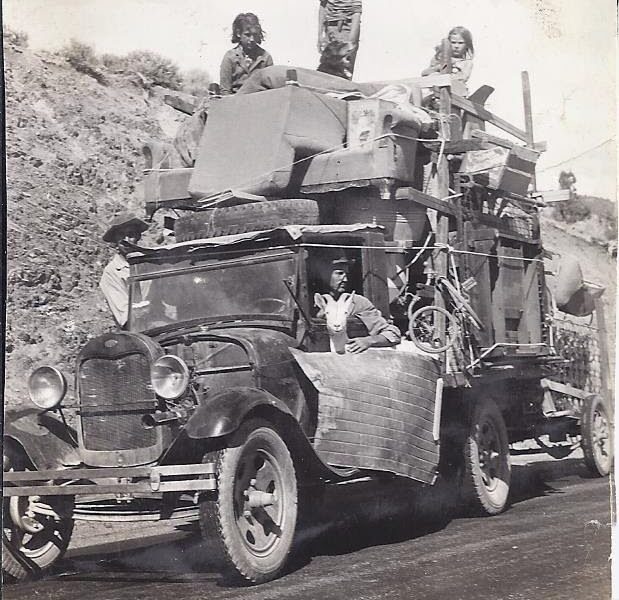Dust Bowl Refugees Heading West to Start a New Life (1939)
The Dust Bowl of the 1930s was one of the most devastating environmental disasters in American history. Severe drought and poor farming practices turned vast areas of the Great Plains into dry, barren wastelands. Crops failed, livestock perished, and massive dust storms swept across states like Oklahoma, Texas, Kansas, and Colorado, making it nearly impossible for families to survive.

The Journey West
By 1939, thousands of families, often called “Okies” (though they came from several states), packed up whatever belongings they could and headed west, hoping for a better life in California. They traveled in old, overloaded cars, following Route 66 in search of jobs and opportunities. Many had no choice but to leave behind their homes, farms, and everything they had known.

Life on the Road
The journey was harsh and uncertain. Families camped along the highways, struggled to find food and water, and faced discrimination from those who saw them as a burden. California was often seen as a land of promise, but when they arrived, many found that jobs were scarce and living conditions were poor.
A Story of Resilience
Despite the hardships, these Dust Bowl refugees showed incredible strength and determination. They took on low-paying agricultural jobs, lived in makeshift camps, and worked tirelessly to rebuild their lives. Their struggle was famously documented by photographer Dorothea Lange and writer John Steinbeck in The Grapes of Wrath, highlighting the human cost of the Great Depression and environmental catastrophe.

The story of the Dust Bowl refugees remains a powerful reminder of resilience in the face of adversity and the enduring hope for a better future.
:max_bytes(150000):strip_icc()/108802891-56a9e2075f9b58b7d0ffaa81.jpg)


